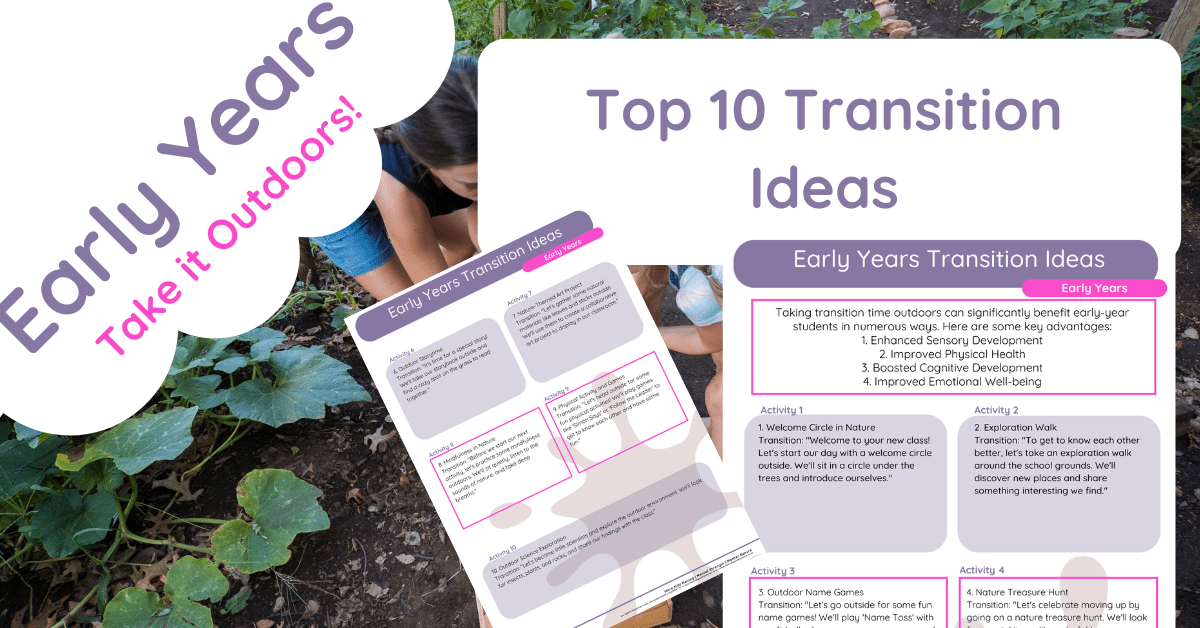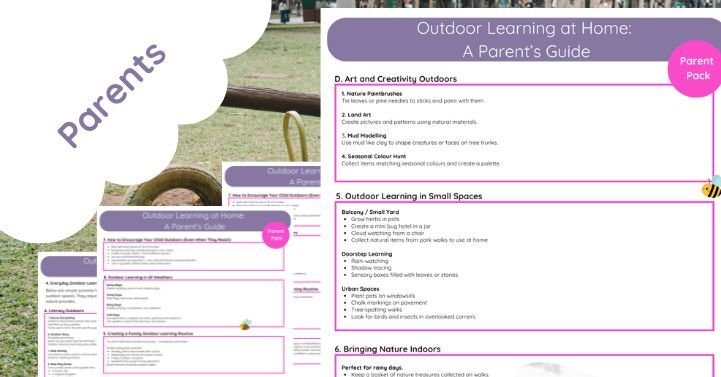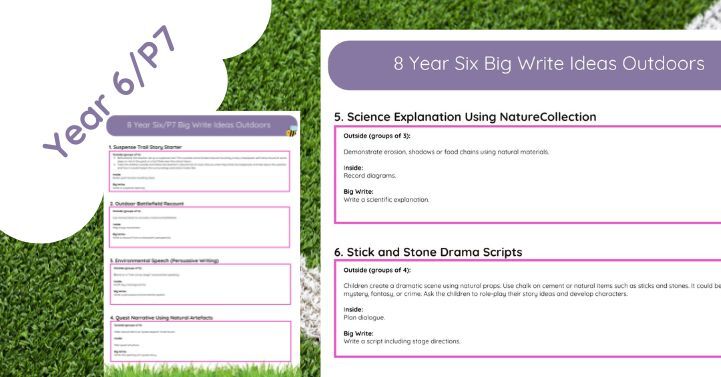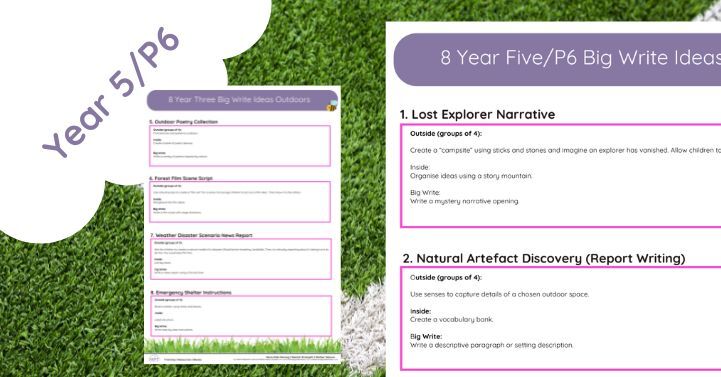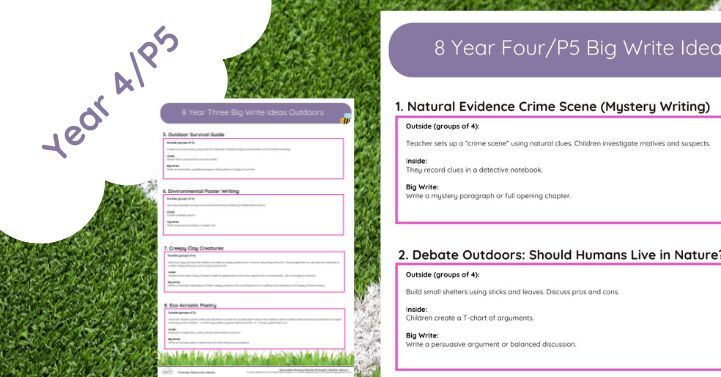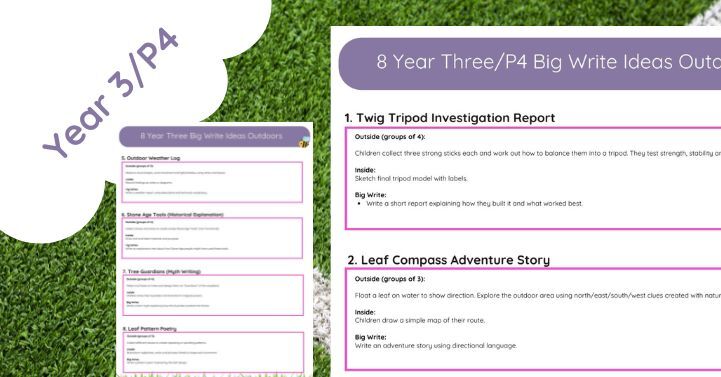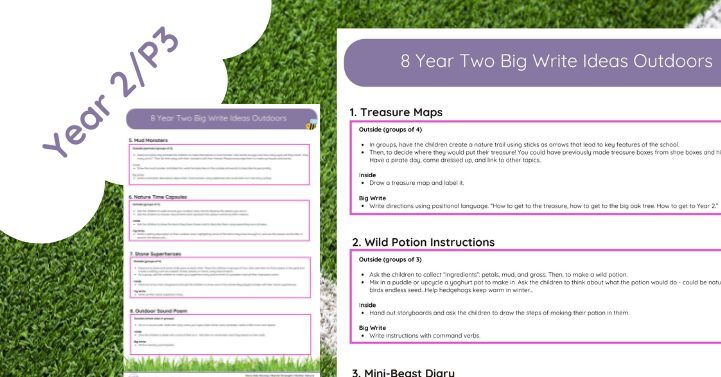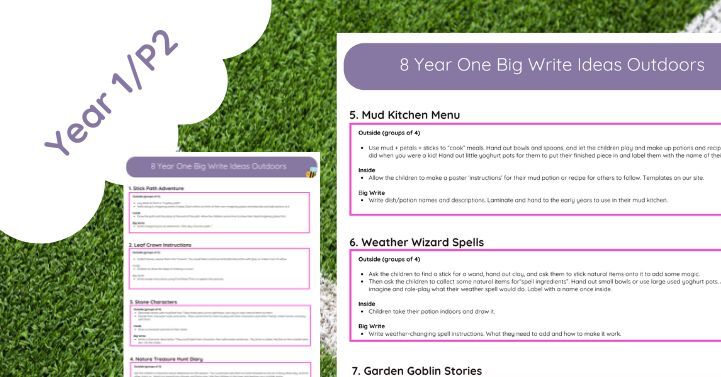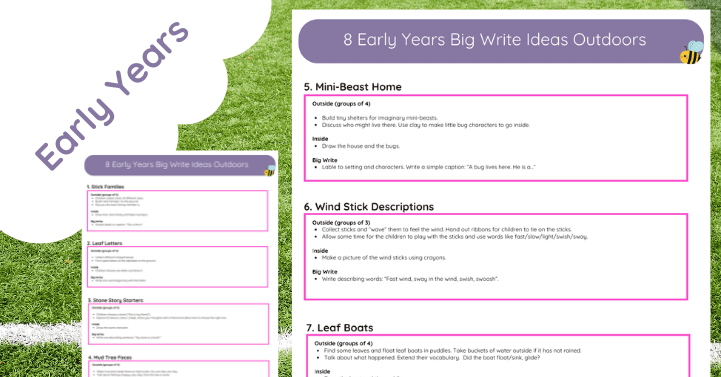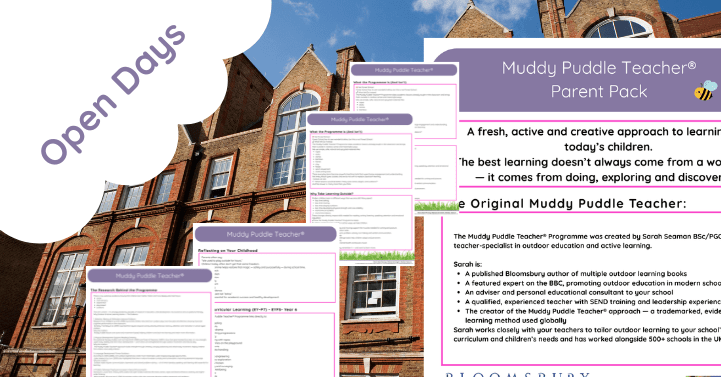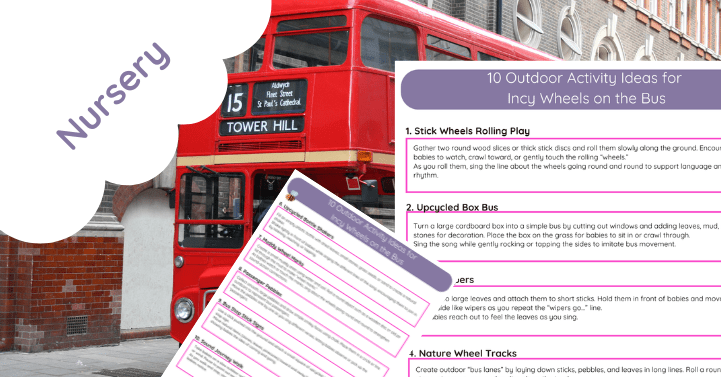Taking transition time outdoors can significantly benefit early-year students in numerous ways. Here are some key advantages:
1. Enhanced Sensory Development
- Multi-sensory Engagement: The outdoors provides a rich sensory environment where children can see, hear, smell, touch, and sometimes taste various elements of nature. This engagement enhances their sensory development.
- Sensory Exploration: Activities like touching different textures (e.g., leaves, rocks, grass) and listening to natural sounds (e.g., birds, wind) stimulate sensory processing skills.
2. Improved Physical Health
- Physical Activity: Outdoor transitions often involve more movement, which helps in developing gross motor skills and overall physical fitness.
- Exposure to Fresh Air and Sunlight: Time spent outdoors ensures children get fresh air and sunlight, which is beneficial for their health and well-being.
3. Boosted Cognitive Development
- Stimulated Curiosity and Exploration: Nature naturally encourages curiosity. Observing plants, insects, and weather can spark questions and investigative thinking.
- Enhanced Learning Experiences: Transitioning outdoors can turn into impromptu learning sessions where children learn about nature, science, and their environment in an informal setting.
4. Improved Emotional Well-being
- Reduced Stress and Anxiety: Being in nature has a calming effect and can help reduce stress and anxiety in young children.
- Increased Happiness and Engagement: Outdoor activities can elevate mood and increase engagement, making children more enthusiastic about learning.
5. Social and Emotional Skills Development
- Collaboration and Teamwork: Outdoor activities often require children to work together, fostering social skills like cooperation, sharing, and communication.
- Emotional Regulation: The natural environment can help children manage their emotions better, promoting emotional resilience.
6. Enhanced Creativity and Imagination
- Creative Play: Nature provides endless opportunities for imaginative play, from creating stories about the creatures they find to building structures with natural materials.
- Artistic Inspiration: The colors, shapes, and patterns in nature can inspire artistic expression through drawing, painting, and crafting.
7. Connection to Nature
- Environmental Awareness: Regular outdoor activities help children develop a connection to and appreciation for nature, fostering a sense of environmental stewardship from an early age.
- Understanding Ecosystems: Through outdoor exploration, children learn about the interconnectedness of living things and their habitats.
8. Better Transition Management
- Smooth Transitions: Moving between activities can be smoother outdoors, as the environment provides natural cues and space for children to adjust gradually.
- Reduced Classroom Congestion: Taking transitions outside helps reduce the hustle and bustle inside the classroom, leading to a more organized and calm learning environment.
9. Enhanced Attention and Focus
- Nature Breaks: Short breaks in nature can refresh and refocus young minds, leading to better attention and concentration when they return to indoor activities.
- Natural Stimulation: The varied and dynamic outdoor environment can help sustain children’s attention and interest longer than a static indoor setting.
10. Inclusive Learning Opportunities
- Varied Learning Modalities: Outdoor environments cater to different learning styles, providing kinesthetic, auditory, and visual learners with diverse ways to engage and learn.
- Adaptability: Outdoor settings can be more adaptable to different needs and preferences, making learning more inclusive for all children.
Overall, taking transition time outdoors supports holistic development in early years students, making learning more engaging, enjoyable, and effective.


